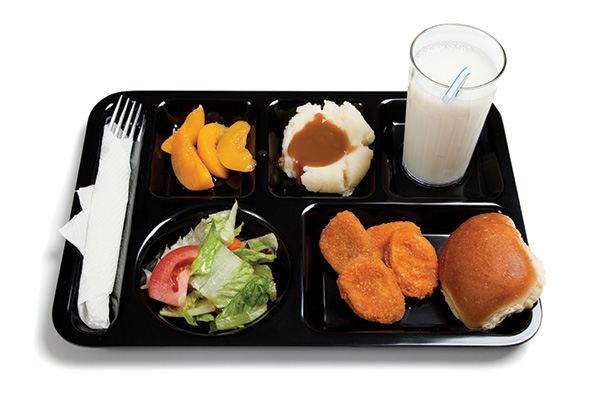Foodservice operators typically use serving/buffet equipment in cafeteria-style, self-service applications or in front-of-house made-to-order applications. For this reason, it’s common in schools, casinos, military operations and corporate feeding as well as restaurants and hospitals.
 Each market requires a different style and set up. For example, utilitarian setups move large volumes of people through lines in the shortest amount of time. Corporate setups function more as amenities to keep staff members in the building during lunch hours. In addition to serving students, colleges and universities also utilize serving/buffet stations as a marketing tool during open houses or parent weekends.
Each market requires a different style and set up. For example, utilitarian setups move large volumes of people through lines in the shortest amount of time. Corporate setups function more as amenities to keep staff members in the building during lunch hours. In addition to serving students, colleges and universities also utilize serving/buffet stations as a marketing tool during open houses or parent weekends.
Operators can use this equipment for both self- and full-service applications. Other considerations for purchasing include menu, number of customers per serving period, flow of the operation, equipment needs and space constraints.
Serving/buffet stations can use a traditional galley or long line format, or operators can elect to scatter self- and full-service stations in different areas. Modular setups allow operators to use the equipment and the space it occupies for a multitude of purposes or events. High schools tend to be fans of modular serving and buffet line equipment because it allows them to use it for lunch as well as sporting events or school celebrations.
Like the format, the equipment can be as simple as a stainless steel cart with a few pans or more sophisticated with custom hot tops for holding, cold pans, steam tables, food guards, lighting, refrigeration and storage systems.
Buffet and serving counters can include equipment on top and below as a complete unit or be separate with a platform or pedestal below a table surface. The majority of operators use custom fabricated equipment to include components for individual applications
and operations.
Equipment varies by construction, including modular unitized, modular frame with a custom fabricated worktable base, stationary with millwork/casework, a custom frame made of steel or stainless steel as either angle iron or tubing, and a millwork frame.
The material and appearance drive the price of serving/buffet equipment. Multiple finish options range from plastic to stainless steel to millwork. Galley styles come in molded plastic. Stainless steel tops, although institutional in appearance, have a long service life and are easy to clean. Solid surfaces, such as Corian, quartz, stone, wood and copper, provide an upscale look. Millwork types are not recommended for humid environments. Porous wood can harbor bacteria, so it should be avoided for serving/buffet line use.
Table lengths can vary from 10 feet for a small facility up to 250 feet for a more substantial operation. Standard heights run between 34 and 36 inches, although elementary schools typically specify 30 inches high at most for student access. Operators can also choose special widths from 24.5 to 44 inches.
Serving and buffet equipment comes with very few standard features, as each line is custom designed to the customers’ needs. Operators can purchase a basic box line, adding shelves, doors and drawers as needed. Custom units can include anything from back lit plate shelves to hidden storage and high-end refrigeration.
A number of options are available with these units. These include food guards; tray slides; decor panels; casters or legs; kick plates; various countertop materials; inclusions or drop-ins; and a choice of stainless steel gauge.
Newer innovations, such as hot/frost merchandising platforms and refrigerated over shelves can be added.
Trends on the custom side include water fall edges, compound curves or ‘C’ shapes, front of counter curves, and reclaimed woods for the front sections. Mixing materials also is gaining popularity for these units. Rolling refrigeration or steam tables continue to gain favor for added flexibility in these stations.
Appropriate lighting to merchandise food also is important. Other considerations for serving/buffet lines include reach and accessibility, adjustable food guards, changeovers for full- and self-service use, electrical needs and load centers to distribute use, and components for exhibition cooking.











